We all think we know our cats. They are often portrayed as wily, self-interested creatures that do precisely what they feel like doing. Butcatsare no more self-interested than any other animal – evolution quickly sidelines those who don’t look out for themselves. And in fact, recent discoveries by molecular geneticists, veterinary scientists and animal behaviourists have overturned much of what we thought we knew about this familiar animal. So, if you think your cat is a calculating mind-reader beyond your control, you’re in for a surprise…
1
Myth #1: Milk makes an ideal food for cats
The traditional image of a contented cat lapping from a bowl of milk is a misleading one. Cats are very fond of cream, which they value for its high fat content, and so they are especially attracted to milk that has come straight from the cow, especially after the cream has been allowed to rise to the top. However, the milk we now buy in supermarkets contains little fat, and while some cats may like it for its taste, many do not find it easy to digest.
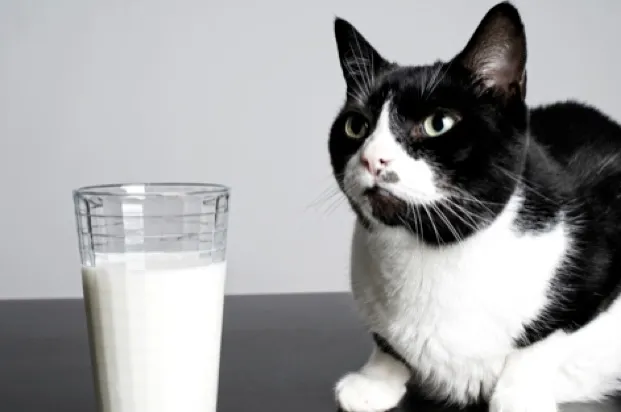
2
Myth #2: Cats can't be trained
The surprising truth is that cats are just as good at learning as dogs are, so it should be possible to train them, although few people do. Partly this is because the cat’s traditional function, hunting and killing vermin, comes naturally to them, and they are actually more successful at this when left to their own devices. Untrained dogs, on the other hand, are more of a hindrance than a help.
However, the fundamental difference behind the two species is not in how good they are at learning, but in what motivates them to learn. Dogs (Canis lupus familiaris) are unique in that they find human attention rewarding in its own right. They focus almost obsessively on what their trainers are doing. It means their behaviour can be shaped by following a desired behaviour with a pat on the head, say, or ignoring them when they do something else instead. Dogs can, of course, also be trained usingfoodas a reward, but for most cats (Felis catus), this is the only reward that will work consistently. Indeed, the easiest trick to train a cat to perform is to ‘beg’ for its food, as countless YouTube videos attest.
To train a cat requires a great deal more patience and perseverance than for a dog. This is because most cats only attend to people when they need something specific, while dogs do this all the time. They first have to be taught that there will be a payoff for paying attention, specifically a tasty prawn or morsel of chicken breast. Training sessions need to be kept short to begin with, since cats will walk away as soon as they get bored, and any attempt to drag the cat back to the training area will make it less likely to learn.
Training can be a valuable way of improving the cat’s wellbeing at the same time as making life easier for the owner. For instance, a trip to the vet can be something of a trial. But if the cat has been trained beforehand that going in and out of its carrier is fun, and that the carrier itself is a safe and comfortable place to be, the whole process can be completed with a great deal less stress.
3
Myth #3: Curiosity killed the cat
This old saying implies that cats are so inquisitive that they regularly put themselves at risk, but in fact very few cats act like this. They do indeed vary in how inquisitive they are – a few are bold enough to approach novel situations, but most are generally much more circumspect, choosing instead to inspect anything unfamiliar from a safe distance. Biologists now consider that character traits like these are akin to human personalities and are common to many animals, not just cats.
It seems that when resources such as food are scarce, bold animals do better than timid ones because they get to eat first. However, being timid when approaching food also means that an animal is less likely to end up as a meal for a predator. This is how both personality types persist in a species.
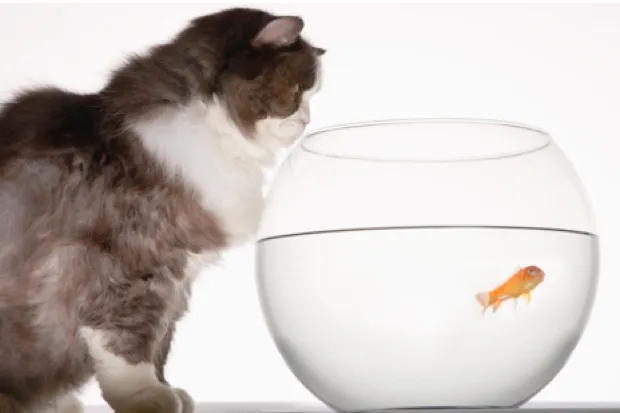
So if the saying isn’t true, how did it arise? It turns out that the original form of the saying, first recorded in the 16th Century, was ‘care killed the cat’ – care in the sense of worry or stress. Quite why this was then considered notable is unclear, but veterinary science is now rediscovering the truth behind it. Many of today’s pet cats suffer from stress-related illnesses such as cystitis and dermatitis, and recent research has shown that antagonistic relationships between cats are a major, perhaps the major, contribution to many episodes of these illnesses.
Stress can arise between cats in the same house, where the owner has unwittingly selected two that do not get along, or between cats in neighbouring houses fighting over a boundary between their respective territories. Cats lack the sophisticated analysis of body-language that enables dogs to resolve such differences and can live in a state of conflict for months, even years, on end. A typical example of this was shown on the BBCHorizonprogrammeThe Secret Life Of The Cat, where two of the cats, Kato and Phoebe, living in houses opposite to each other across the street, were still disputing ‘ownership’ of the gardens between.
4
Myth #4: Cats are domesticated animals
Cats with pedigrees – Persians, Siamese, Russian Blues and Maine Coons, to name but a few – fit the biologist’s criteria for a fully domesticated animal. Their owners control their breeding, feeding and care, just as with pedigree dogs, or for that matter, pigs and cattle.
However, most cats in Britain are ‘moggies’, not pedigree animals. Their mothers were probably pets, but when the mating season came around (usually January or February), they would have disappeared out through their cat-flaps and actively sought the attentions of as many males – tomcats – as they could find. It’s possible that one or two of those toms might have been pets themselves, but nowadays most owners have their male cats neutered to prevent them from roaming. This means that many of them would have been ferals, un-owned cats that live on their wits, and are extremely wary of people.
Each female, or ‘queen’, then observes the selection of tomcats she has attracted over a period of several hours, even as long as a couple of days, before selecting one or two which she allows to mate – something that would not be allowed by the owner of a fully domesticated animal. This behaviour has changed little during the course of domestication, confirming that moggies, at least, are still not fully domesticated animals.
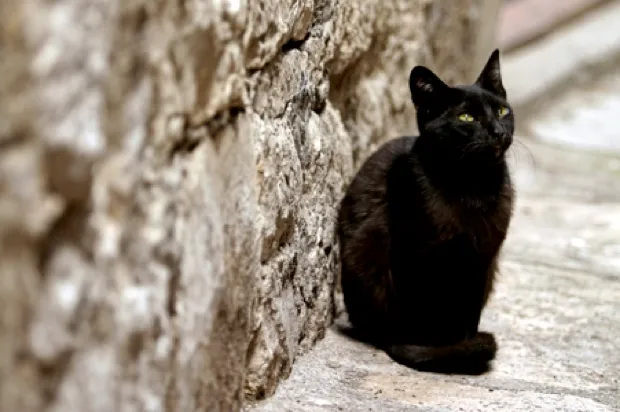
Moreover, this courtship provides a mechanism whereby domestic cats can continue to evolve – the relative persistence of the tomcats and the preferences of the queens for particular toms, both influence the characteristics of the next generation of kittens.
The very existence of feral cats further demonstrates that not all ‘domestic’ cats are fully domesticated. Domestic kittens are born to learn how to interact with people, but if they are deprived of human company for the first two months of their lives, they become wary of humans in general. They can adopt a feral lifestyle, scrounging or scavenging for their food.
On the other hand, if feral kittens are discovered before they reach the critical age of two months, and they are carefully introduced to people, they can quickly become indistinguishable from any pet cat.
Cats are therefore still capable of moving in and out of domestication within a couple of generations, something no fully domesticated animal can do. Your moggie probably has a wild side.
5
Myth #5: Cats know what their owners are thinking
Scientists are divided as to whether any animal, other than us, has the ability to realise that the animals around them have minds at all. We use this ‘theory of mind’ so effortlessly that it can be hard to imagine not possessing it. For example, during a conversation we unconsciously choose our words carefully to get our message across, because we are able to imagine what the other person is likely to be thinking as we are speaking to them. We take into account that the person we are talking to has a mind somewhat like our own, but that there may well be subtle differences between our two minds because we are individuals.
Apart from perhaps our closest relations among the apes, other mammals seem to have only very limited ‘theory of mind’. Dogs display a primitive version, known as ‘attention-to-attention’: they alter the way they signal to one another depending upon whether the other dog seems to be paying attention. However, this does not prove that they know that other dogs have minds. It could be the expression of a sophisticated set of rules for communication, such as ‘if you can see both of the other dog’s eyes, signal your intentions; if you can’t, bark to get his attention’.
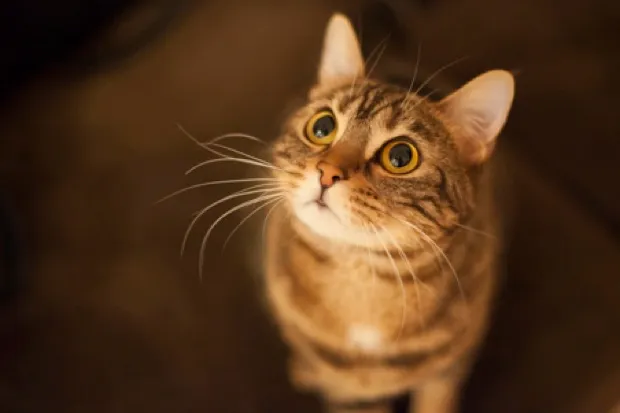
It’s not clear whether or not cats reach even this level of sophistication: descended from a territorial species that had only limited opportunities for interaction with members of its own kind, it is unlikely that cats’ brains would have evolved such an ability. So when your cat is looking at you, it will certainly be paying attention to you, but it’s unlikely to be pondering whether you’re thinking back, never mind reading your thoughts.
6
Myth #6: A dog's sense of smell is more sensitive than a cat's
Gun dogs can pick up odours at concentrations 10,000 to 100,000 times lower than our relatively insensitive noses can. Cats, with their smaller noses, can only beat us by a factor of between 1,000 and 10,000. So in one respect, dogs do have a better sense of smell than cats.
But unlike humans, cats and dogs possess another olfactory sense – a second ‘nose’ that lies between the roof of their mouths and their nostrils. And cats beat dogs paws down in the resolving power of this second chemical sense.
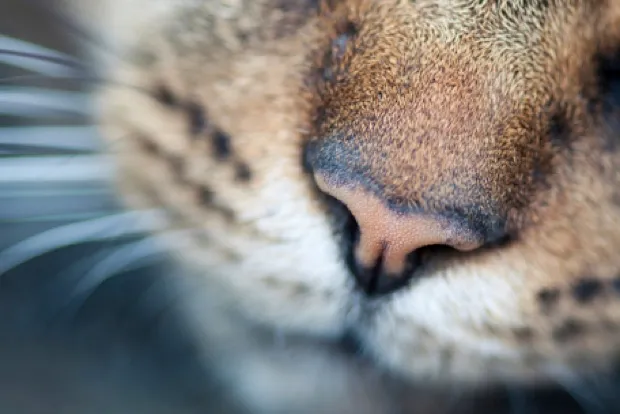
The second ‘nose’, known as the vomeronasal or Jacobson’s organ, consists of a pair of fluid-filled tubes, each with one opening in the nostrils and the other just behind the incisor teeth. About halfway down, each tube connects with a pouch that contains a sense organ. To reach this organ, odours have to first be dissolved in saliva and then pumped up into the pouch, producing sensations that must lie somewhere between smell and taste. The vomeronasal organ (VNO) even has its own area of the brain, the accessory olfactory bulb, where the information it produces can be processed separately from that generated by the nose proper.
Cats have a bigger range of receptors in their VNOs than dogs do (30 versus 9). Moreover, while dogs do not give any obvious indication that they are using their VNOs, cats do: they pull their top lip upwards, exposing their top teeth – and presumably also opening up the VNO ducts – in a grimace that looks rather fierce. This facial contortion, perhaps because we only discovered its significance quite recently, does not even have an English word to describe it. Biologists refer to it by its German name ‘Flehmen’.
Cats’ VNOs are probably more discriminating than dogs’ because they were originally solitary animals and so had to rely on scent marks to communicate with one another. When cats perform Flehmen, they have almost always just sniffed a scent-mark left by another cat, so they are presumably using their VNOs to get more detailed information about whoever left that mark. We caught many examples of this on the night-vision cameras deployed around Shamley Green, the Surrey village chosen for the BBC programmeThe Secret Life Of The Cat.
Research has yet to reveal the full extent of their vomeronasal organ’s abilities. But we do know that cats can identify other individuals from their scent marks if they’ve met them before and that even if they haven’t, they can tell the sex and reproductive state of the cat that left its mark.
7
Myth #7: Domestic cats can be traced back to ancient Egypt, about 4,000 years ago
It’s still true that this is where and when the earliest pet cats are placed by the archaeological evidence, but recent research into our pet cats’ DNA has extended this story back another 5,000 years or so.
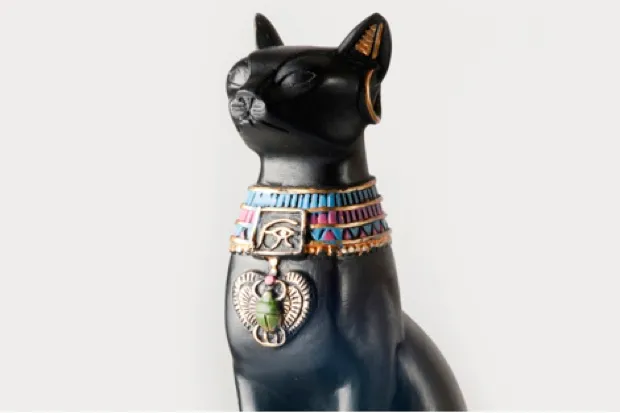
Dr Carlos Driscoll and his colleagues at the National Institutes of Health in Bethesda, Maryland, examined the mitochondrial DNA of hundreds of pet and wild cats. He concluded that the domestic cat and its wild counterpart, the Arabian wildcatFelis silvestris lybica, diverged not 4,000 but 10,000 years ago. Subsequently, domestic cats spread from their point of origin throughout the Middle East and North Africa. They occasionally interbred with wildcats, all the while becoming progressively more distinct from them, especially in their ability to be tamed.
Precisely where that point of origin was is still uncertain: the DNA of today’s wildcats from that place should be very similar to that of pet cats worldwide, but given the current political turmoil in the region, it has not yet proved possible to collect enough samples to pinpoint the location with any degree of certainty.
So, rather than a single and rather abrupt domestication event in Egypt, it seems that the domestic cat gradually evolved from the wildcat, over a period of several thousand years. Over time it became progressively more pet-like, while retaining the hunting ability that made it invaluable in keeping foodstores free from rats and mice.
This extract came fromBBC Focusmagazine- for complete featuressubscribe here.